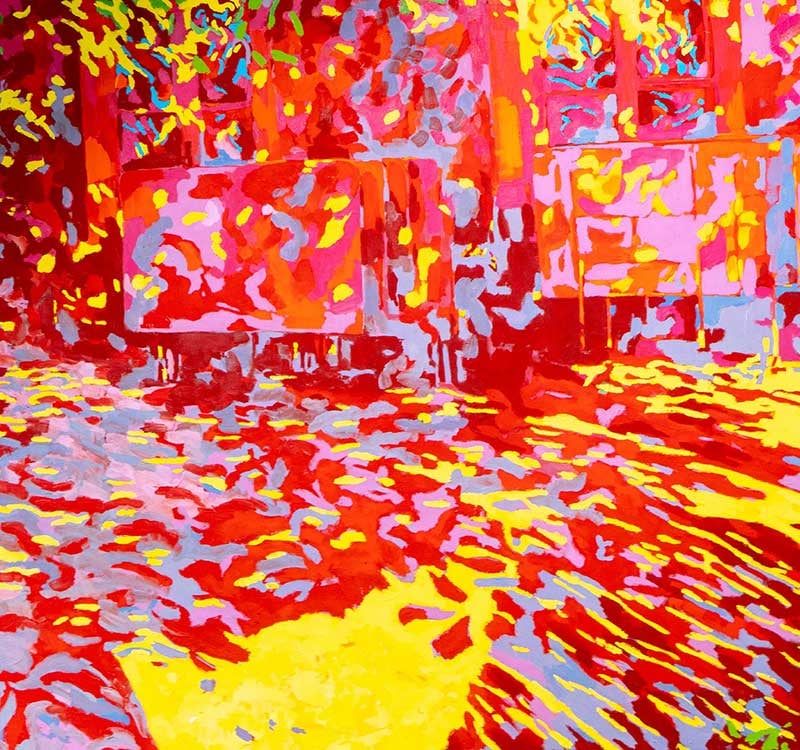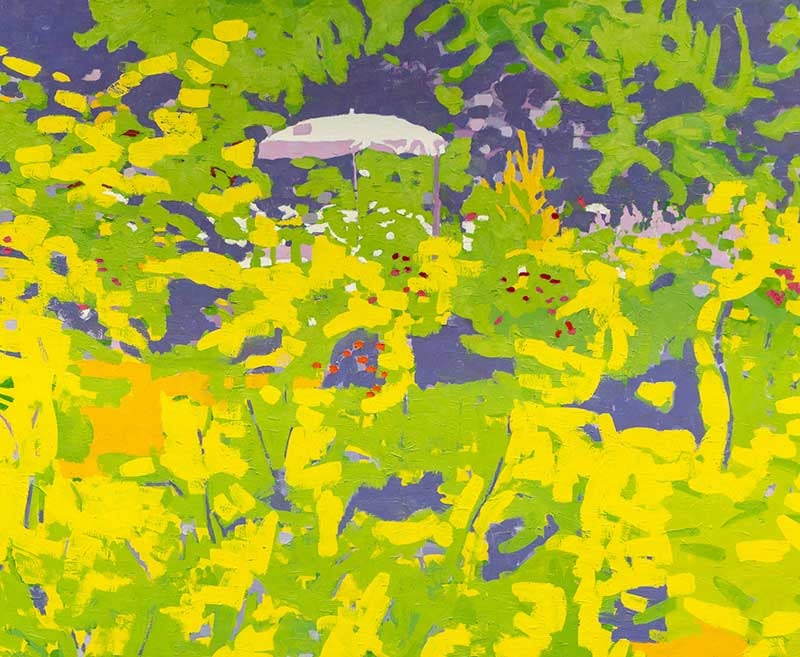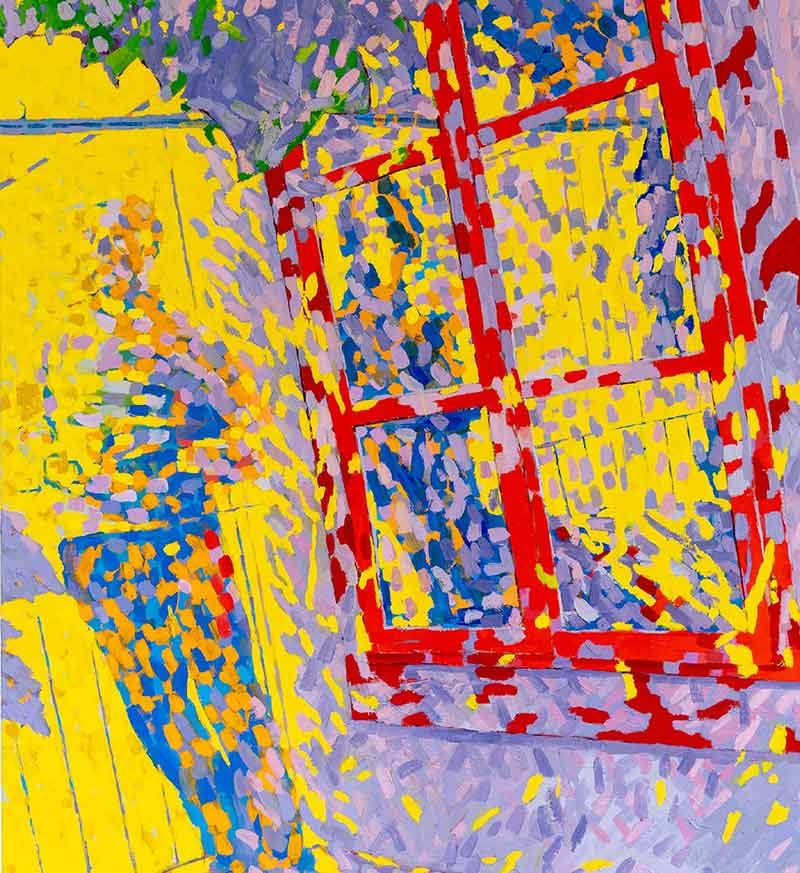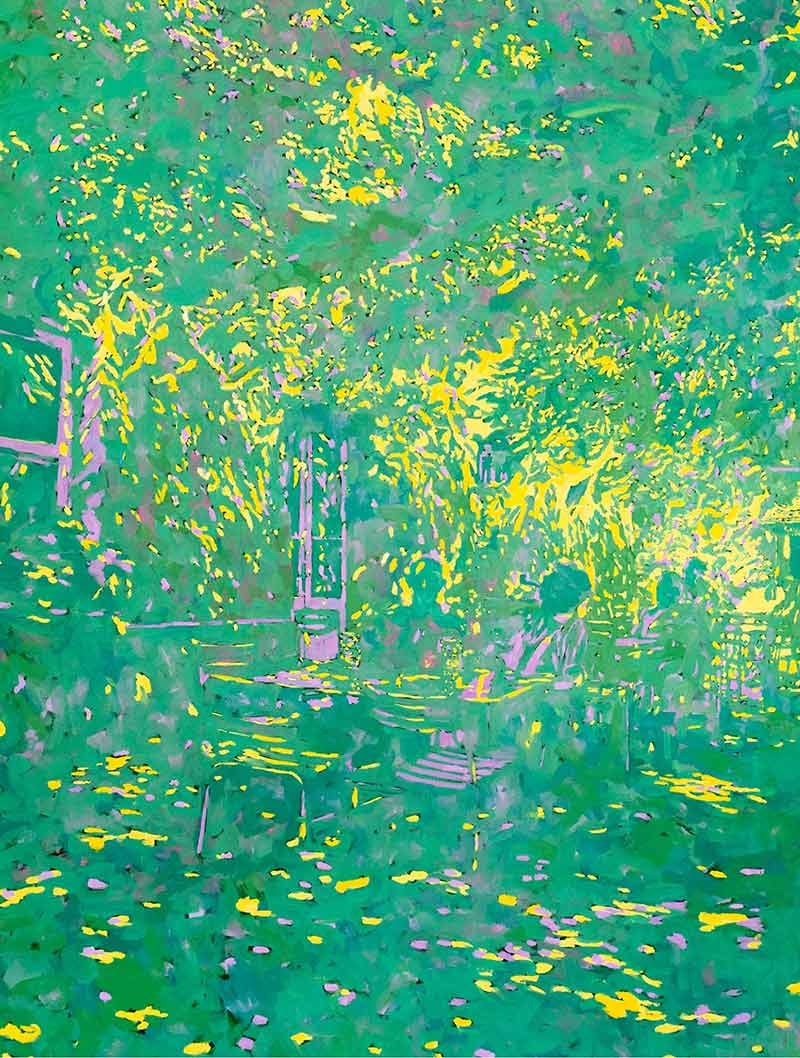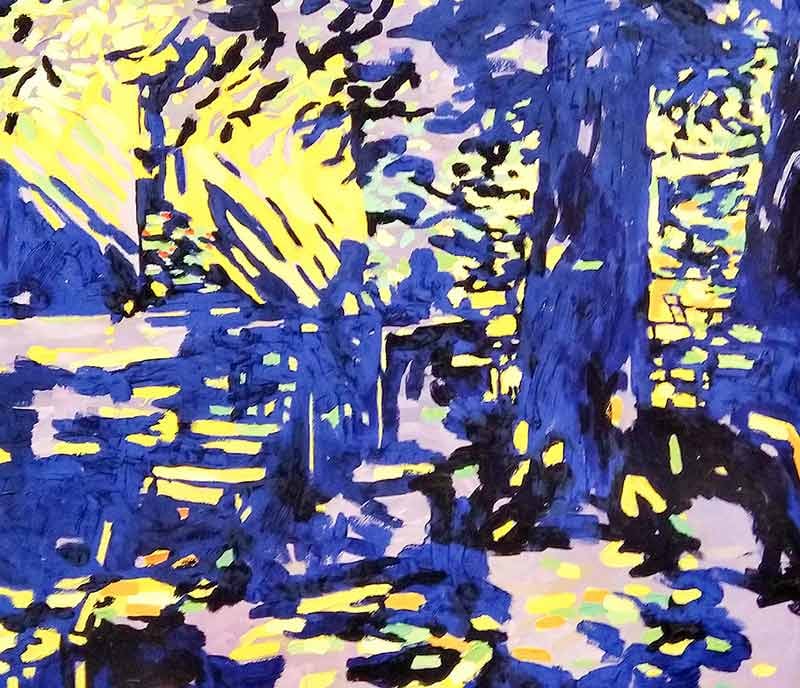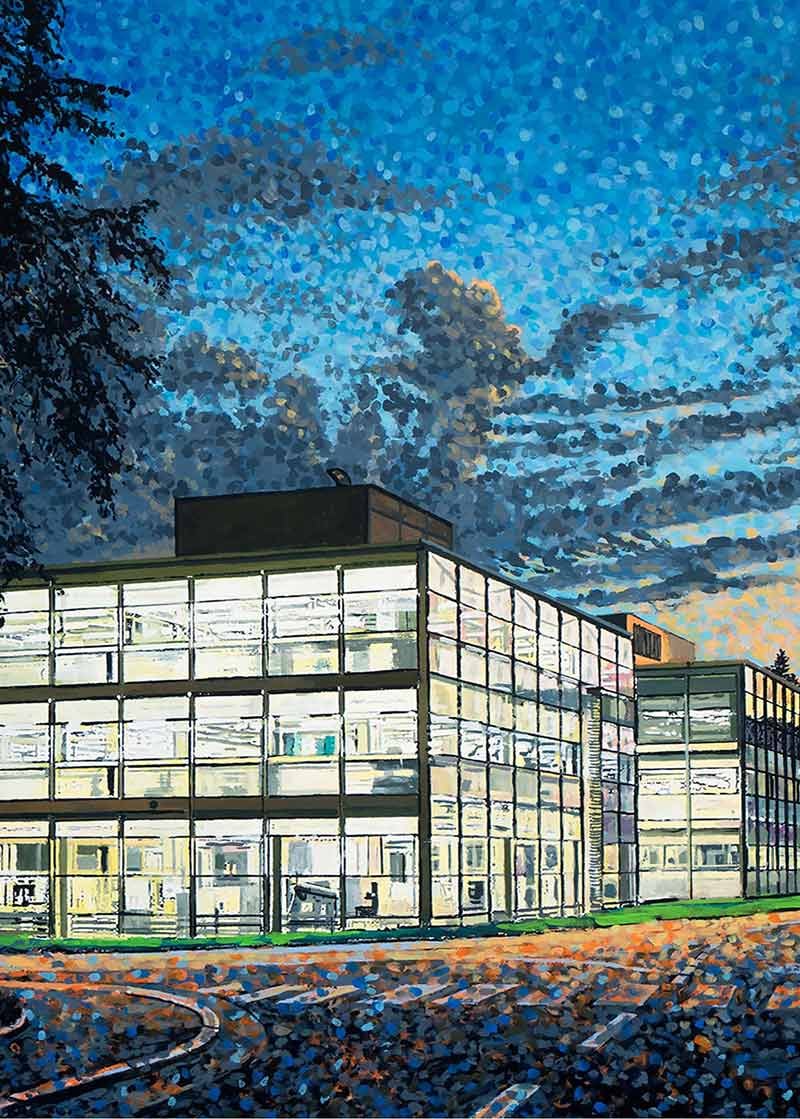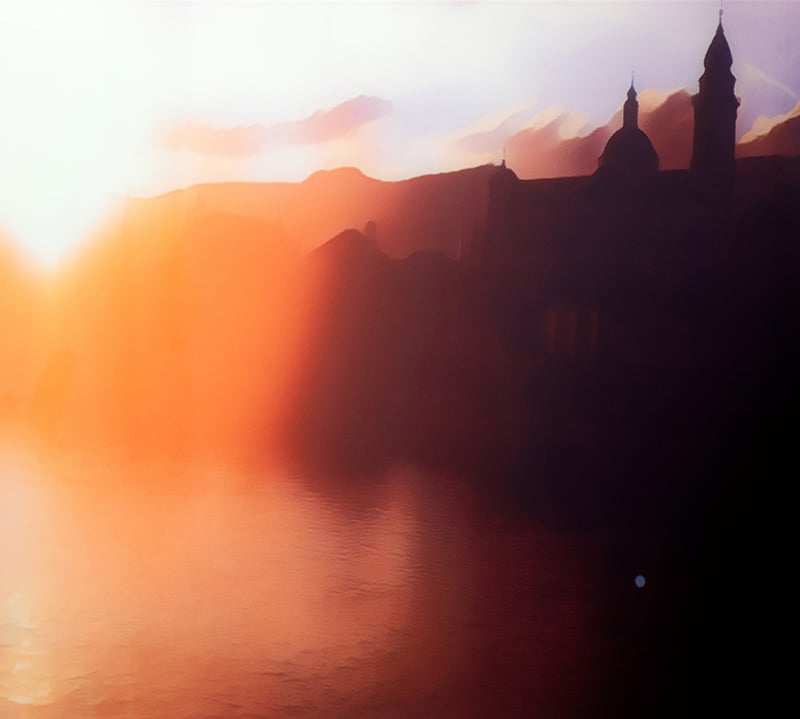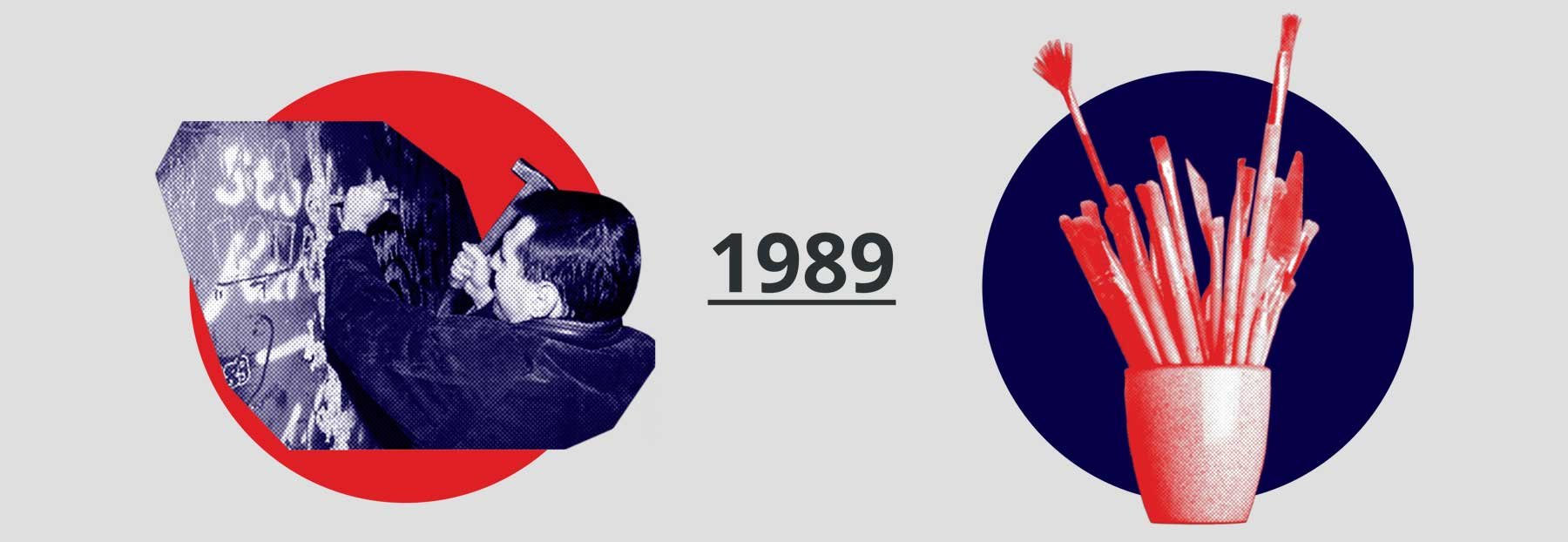
IN 1989 HUGO PFLUGER MET THE PAINTER ROLAND FLÜCK. ART CAME TO AGATHON
—
IN THE SAME YEAR, ON NOVEMBER 9, THE DISSUASIVE SYMBOL OF THE EAST-WEST CONFLICT BECAME HISTORY: THE BERLIN WALL FELL, THE IRON CURTAIN CLOSED FOREVER.
A TRIP TO THE EMMENTAL
In 1989 the former Agathon patron and art lover Hugo Pfluger drove his car to the Emmental. Goal: The art exhibition Trubschachen. Until 2017, every four years, the place was a destination for pilgrimage for those who were enthusiastic about Swiss artists from Hodler to Giacometti. Hugo Pfluger was impressed by the paintings of the Solothurn painter Roland Flück.
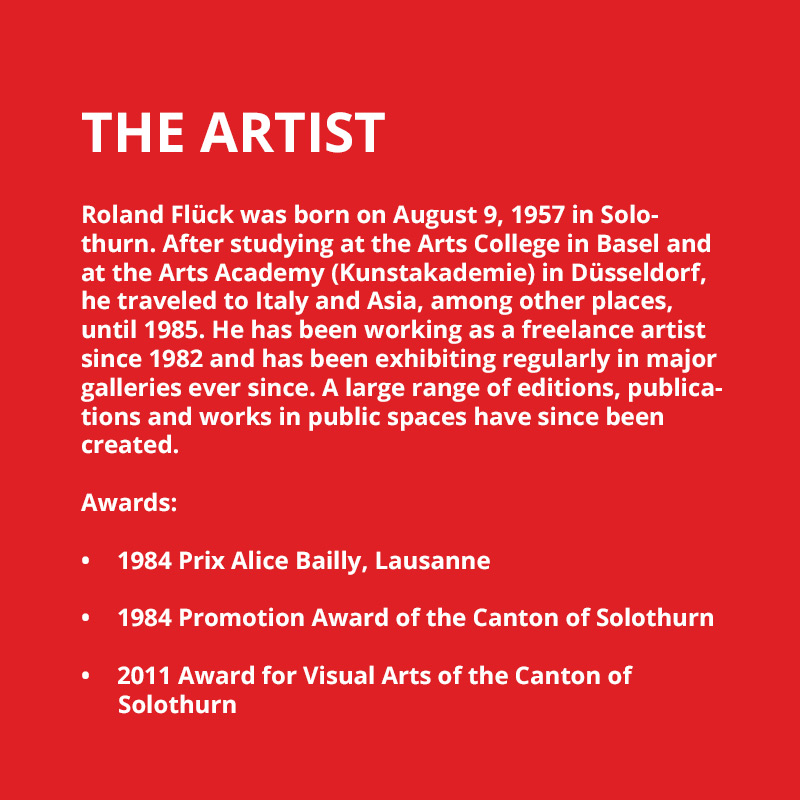
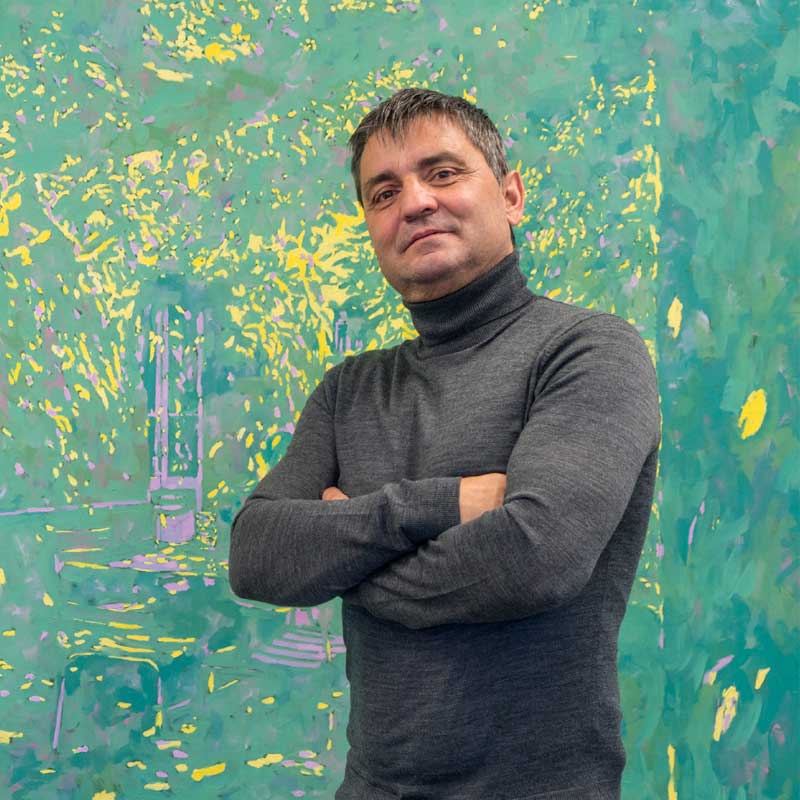
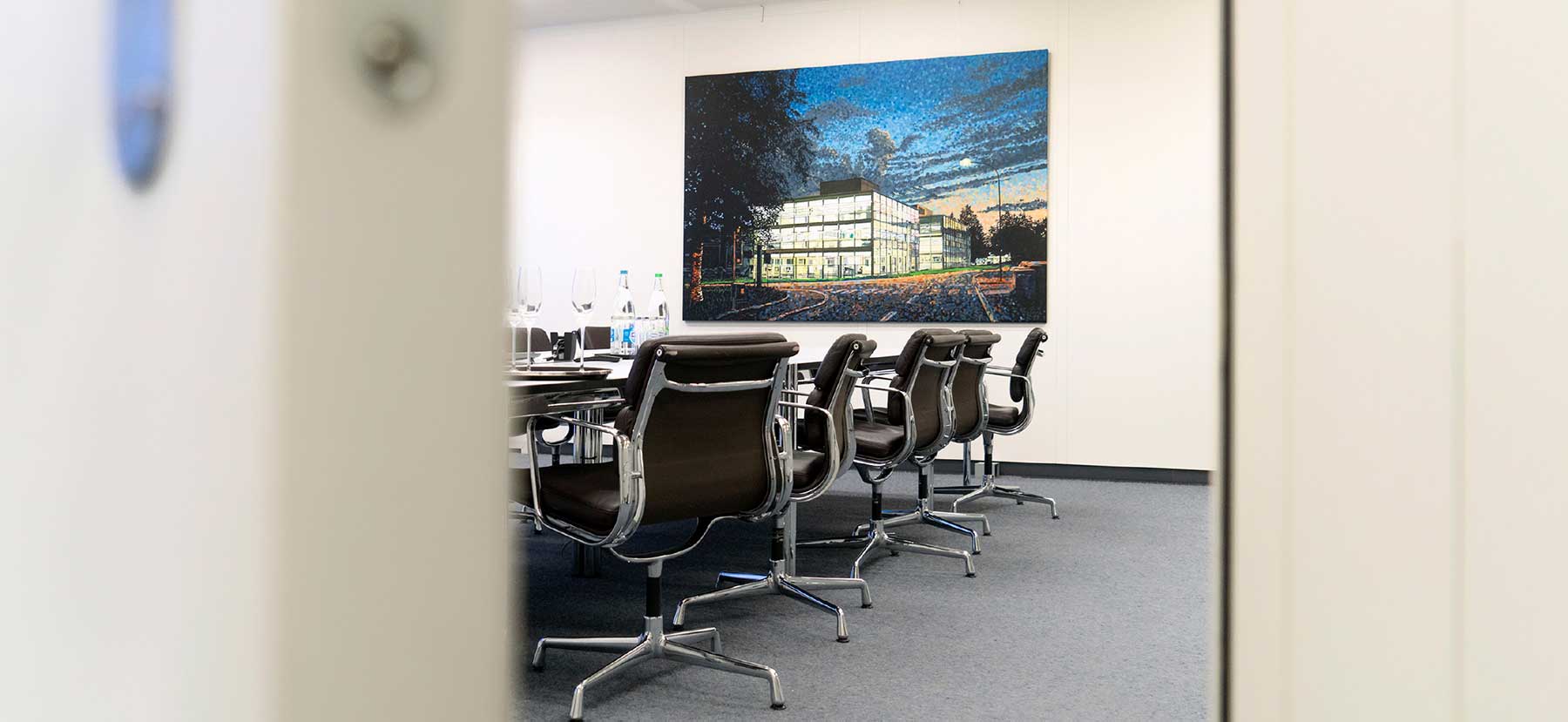
For the Agathon100-year anniversary Roland Flück created a painting of the Headquarter building at dawn in his well-known style: a gem for our meeting room.
Following the exhibition in Trubschachen, Hugo Pfluger and Roland Flück met in the artist’s studio. It was agreed there that Roland Flück would produce a total of seven paintings for the company’s headquarters in Bellach. Hugo Pfluger wanted the building to be aesthetically pleasing not only from the outside but also from the inside. The collaboration between Agathon and Roland Flück rested for almost 27 years until Agathon CEO Michael Merkle approached the Solothurn artist. His wish: The artist should create another painting for the 100th anniversary of the company. Flück accepted.
At the end of the anniversary year, the artist donated another painting to Agathon. This was the preliminary conclusion of his work for the company.
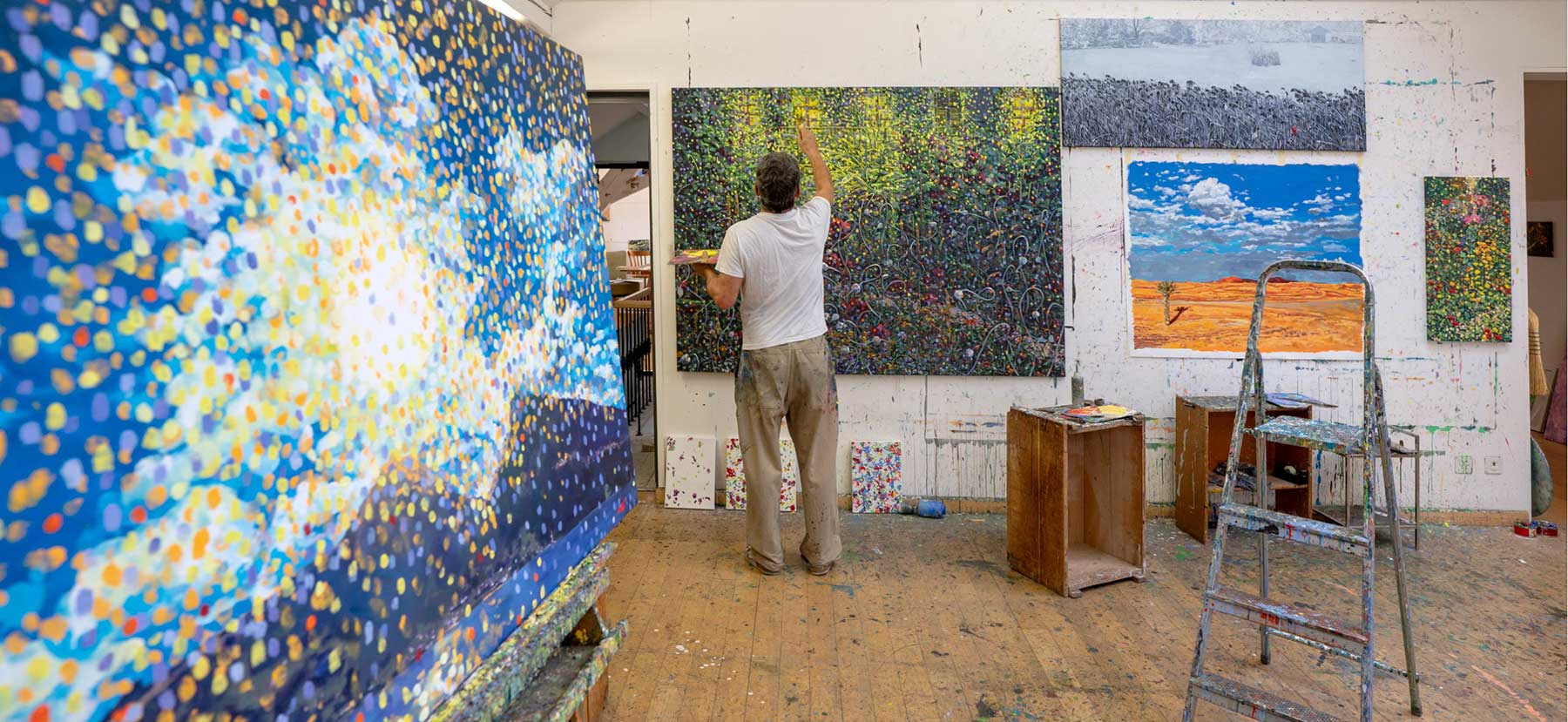
Roland Flück in his studio in Solothurn.
Of the seven paintings completed by Roland Flück in 1989 and 1990, five are still owned by the company today. The content of these works is linked by the theme of garden/garden restaurant. «At that time I simply liked to paint garden inns, where the people smoked their stumps and drank a glass of beer», answers Roland Flück today when asked about the deeper meaning of this theme. From an aesthetic point of view, the light spots resulting from the effect of the sunshine and shadows thrown by the trees are interesting.
The paintings were painted with oil on canvas. The colors are based on the color theory of the Swiss painter, art theoretician and Bauhaus teacher Johannes Itten. This means that the pictures completely do without the color black. Stylistically, the works can be characterized as modern developments of late Impressionism and Pointilism.
GARDEN RESTAURANT
IN AUTUMN
The painting shows the folded tables and the front of a garden restaurant as well as the shadow of a chestnut tree.
«An unparalleled banality»,
says the artist to the scene shown. What fascinates him about the effect of this painting are the expressionistic red shadows and the harmony that results from the spatial proximity of the complementary colors purple and yellow, blue and orange as well as red and green. «The atmosphere resulting from the color contrasts is essential in this painting. The shape is not so important», explains Flück.
GARDEN
The painting shows Roland Flück’s garden with parasol.
«I am surprised», says the artist spontaneously when he sees this painting again after so many years. For minutes he looks at and inspects the painting.
«This crude application of paint, but perfect. After all this time, not the slightest crack in the paint. And the radiance, an incredibly good painting».
Even today, he is still fascinated by the «power and incredible vitality» that transports the painting.
MAN ON THE BALCONY
The painting shows a fellow painter and friend of Roland Flück, who stands on the balcony of his house and is reflected in the window.
«The diagonal geometry and the figure are interesting in this painting»,
explains Flück. «Just how I dissolved the figure – I should paint so insolently more often». In fact, the person is only recognizable from a distance, while at close range only color dots are noticed. From the effect the painting lives from the tension that results from the play of harmony and disharmony. The combination of the complementary colors yellow and purple create harmony, while the dark red appears like a foreign body in the composition and is extremely disharmonic. «Without the red it would almost be a boring picture», says a joking Flück.
GARDEN RESTAURANT
The painting shows one chestnut tree in the foreground and one in the background. In between are the guests of a garden restaurant and the front of the building.
«This painting is made with a much finer brush»,
Flück explains the difference to the other paintings. This is because the painting shows more details, such as the pipe of one of the guests or the individual beer mugs. The canvas is primed in dark green. The light colors were applied to this primer. This creates the special tension in this work. Flück explains that in order to maintain the radiance of this working method, such a painting can only be done with the best, strongly pigmented oil paints. «I have used the same oil paints that Winston Churchill bought during his visit to Switzerland in 1946». They came from the Swiss paint manufacturer Sax and were used by many famous painters.
GARDEN RESTAURANT
IN SUMMER
This painting again shows a garden restaurant. Under the chestnut tree you can see some people drinking beer and smoking.
«A very interesting painting. Here again the crude, expressionistic application of the paint»,
Roland Flück smiles. According to the theory of color types co-founded by Johannes Itten, colors are used here on a large scale, which for humans correspond to the so-called summer types, including lilac, jeans blue and lavender.
THE AGATHON-BUILDING
The work that Roland Flück created on behalf of Agathon in connection with the company’s 100th anniversary differs in many aspects from the earlier paintings, for example in the choice of colors: Instead of oil, Flück used acrylic paints here. Stylistically, the painting is much more oriented towards Pointillism, which emerged at the end of the 19th century as a response to Impressionism, which had dominated until then. In Pointillism, the paintings consist of small drops of paint that create a perfect harmony. A typical feature of Pointillism is the strictly geometric composition of the pictures, which already stands out in many of Flück’s early paintings and which reveals an even more powerful touch here.
«In contrast to the early paintings, this one is much more planned. It seems more routine and less outrageous»,
explains Flück. The strict geometry of Pointillism in this painting harmonizes wonderfully with Fritz Haller’s architecture and thus with the building shown.
THE GIFT
In December 2018, Roland Flück presented a special gift to the Agathon staff: it is the artistic conclusion of the company’s 100th anniversary. The picture is based on an altered digital photo printed on hardened glass using UV digital printing. In this process, UV-curing, lightfast ink is applied to the material and immediately dried under the effect of LED UV light. The picture shows the banks of the Aare River in the city of Solothurn with St. Ursen Cathedral and Landhaus as well as the Jura mountain chain with sunset in the background. The motif was photographed by Roland Flück from his garden.
